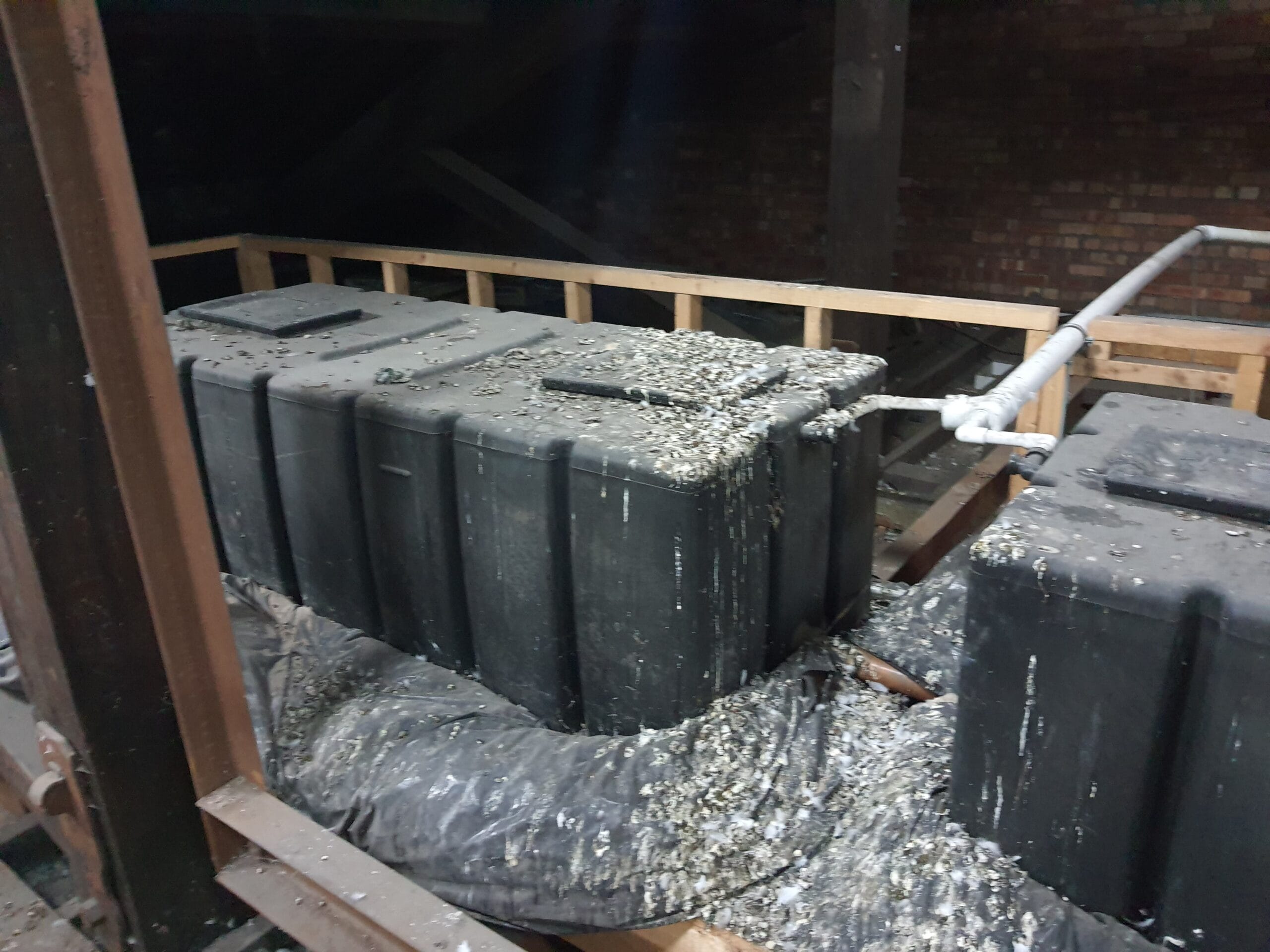This image serves as a striking example of why simply having a tank lid in place is not enough—and why routine inspection, maintenance, and hygiene controls are essential, as laid out in HSG274 Part 2.
While the cold water storage tank shown here did have a lid fitted, it had clearly been neglected for a significant period of time. The heavy accumulation of bird droppings on and around the tank is not just a sign of poor housekeeping—it is a serious red flag indicating potential contamination of the water supply. This points to failures in both pest control and water hygiene management.
Under HSG274 Part 2, it is a fundamental requirement that tanks are not only covered, but that their lids are:
- Well-sealed and secure
- Free from gaps that could allow ingress of insects, vermin, or debris
- Checked at least annually as part of a planned preventative maintenance regime
In this case, the lid has done little to prevent environmental contamination. Bird faeces pose a major risk due to the pathogens they carry, and the presence of nesting materials or droppings so close to a live water system increases the likelihood of bacterial proliferation—particularly Legionella spp.
Even more concerning is that the tank remained connected to a live system, meaning water could have been drawn off at any time. Although this part of the hotel was not in current use, the system’s potential to deliver contaminated water to outlets remained, posing a risk to health and breaching fundamental principles of water safety.
Key Lessons from HSG274 Part 2
- Inspection must be visual and thorough: Don’t just check if a lid is present—inspect for signs of contamination, pest ingress, corrosion, insulation damage, and poor installation.
- Risk assessments must reflect actual conditions: If signs of neglect are found, the inspection frequency and level of control must be escalated immediately.
- Storage conditions matter as much as fittings: A lid that doesn’t stop contamination is a false sense of security.
This image is more than just an example of poor practice—it’s a reminder of the potential consequences when water hygiene is deprioritised. Regular inspection in accordance with HSG274 Part 2 isn’t a box-ticking exercise—it’s a critical step in protecting public health.













Leave a Reply
You must be logged in to post a comment.